Introduction
Welcome to a new issue of the Journal of Runic Studies, the premier Malkioni publication for studies into the nature of Glorantha. If you haven’t subscribed yet, please consult with the spirit bound to the appropriate electronic page.
God Learner Sorcery
Episode 2: On The Road
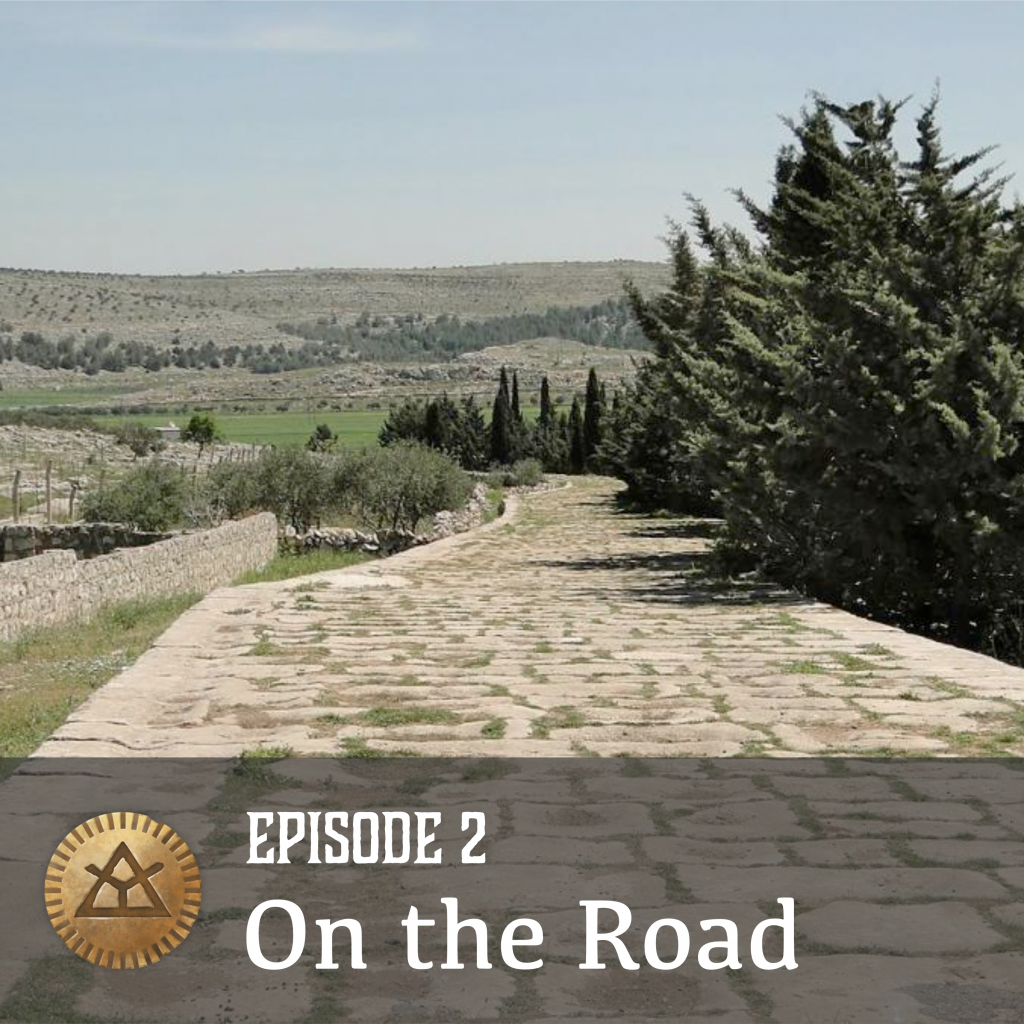
We have published Episode 2 of the God Learner Podcast! Austin Conrad is our special guest, and together we discuss travelling in Sartar: why travel, how to travel, what happens on the way, and where to stop.
A Call for Gloranthan Newbies
If you are a relative newcomer to Glorantha, we want to chat with you! We roughly define “newcomer” as anybody who started playing in or reading about Glorantha around 2018 or later, but in the grand tradition of “rulings, not rules”, we are not taking this definition too seriously. If you feel like a big n00b, that’s enough for us.

We want to get as diverse a bunch of people as possible to get an idea of the various ways people ended up in the lozenge, what they found difficult or jarring, what helped them get a grasp on the setting, and so on. More information here!
Runic Rants: Group Rolls
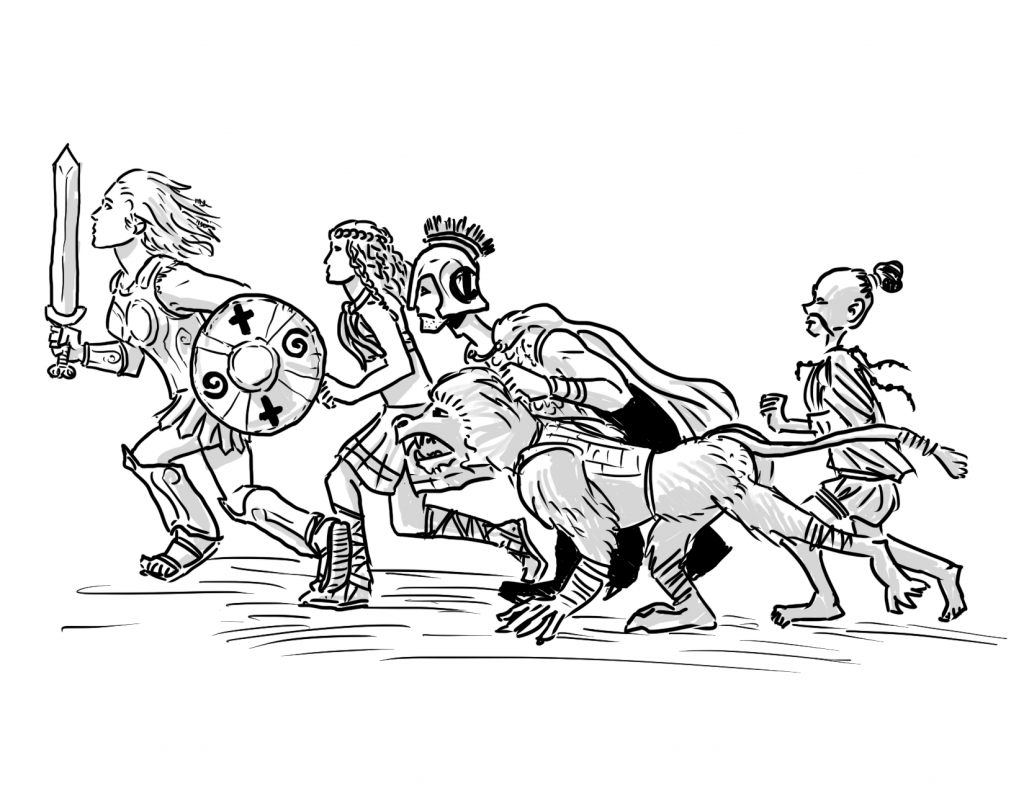
In our first “Runic Rants” column, we talk about possible ways to handle group rolls in RuneQuest.
Chaosium News
Here are this week’s Chaosium news!
The White Bull Campaign
In Episode 4 of Season 2 of Chaosium’s “house campaign”, the players graciously accept the GM’s call for some side adventure taken from the RuneQuest Gamemaster Adventures booklet. Also, listen to Jeff sing and say “corporeal love” a lot!
The First Appendix N
We had already mentioned previously that the excellent GROGNARDIA blog took a look at “the First Appendix N“, also known colloquially as “the Bibliography chapter” of D&D. Well, Chaosium president and collector Rick Meints also took note of it, and has posted some more information about this piece of roleplaying history.
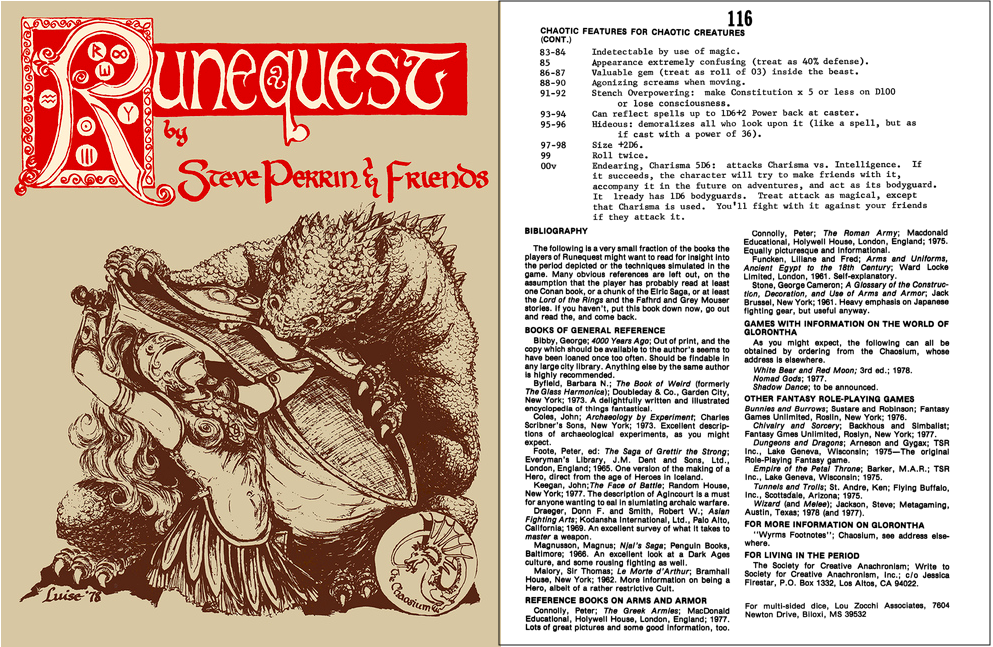
For those of you who love small details like these (we sure do, here at the God Learners!), Rick Meints tells us that the Bibliography section would have technically been Appendix M in the first edition of RuneQuest… if it had been assigned any letter! Read Rick’s blog post for more historical goodness!
Jonstown Compendium

The Jonstown Compendium is Chaosium’s community content program for all Gloranthan games, hosted on DriveThruRPG. Disclaimer: all the relevant links are affiliate links that hopefully will let us cover some of the hosting and maintenance costs for the website and podcast! Thanks for using them!
Monster of the Month: Petty Spirits 2
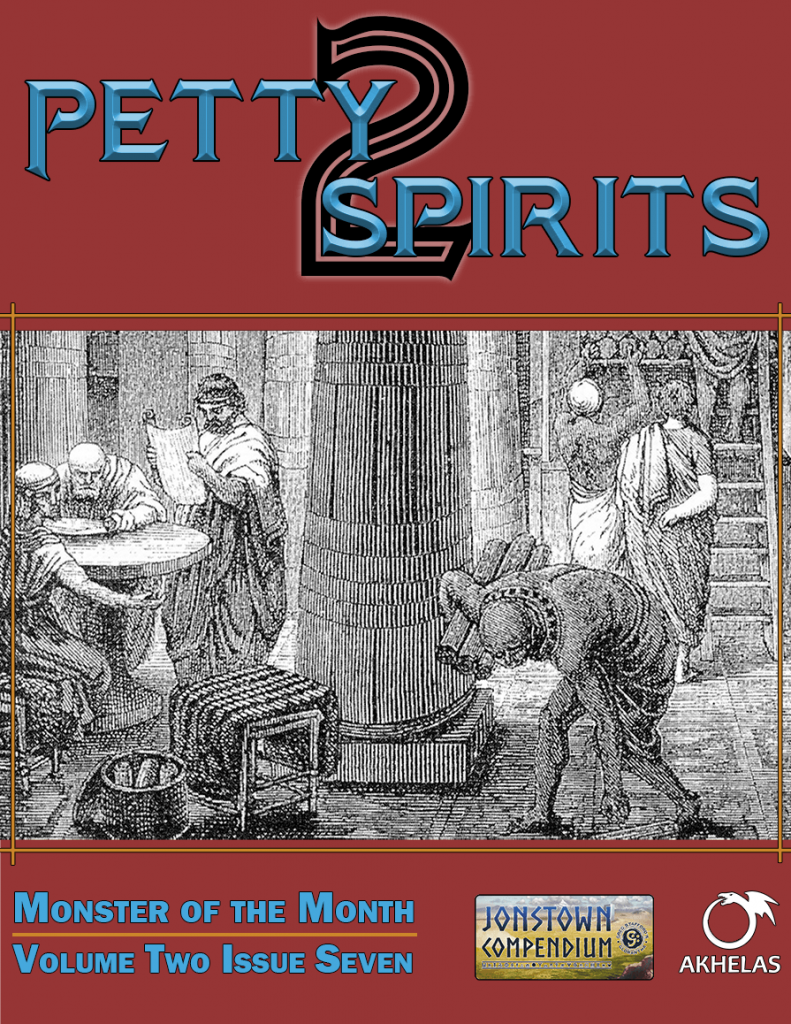
They’re back! Those small little spirits that make the world go… err… square are once more given the spotlight in Austin Conrad’s Monster of the Month Volume 2 Issue 7. Austin had teased it in our most recent podcast episode, in which he was our guest.
Night in the Meadow
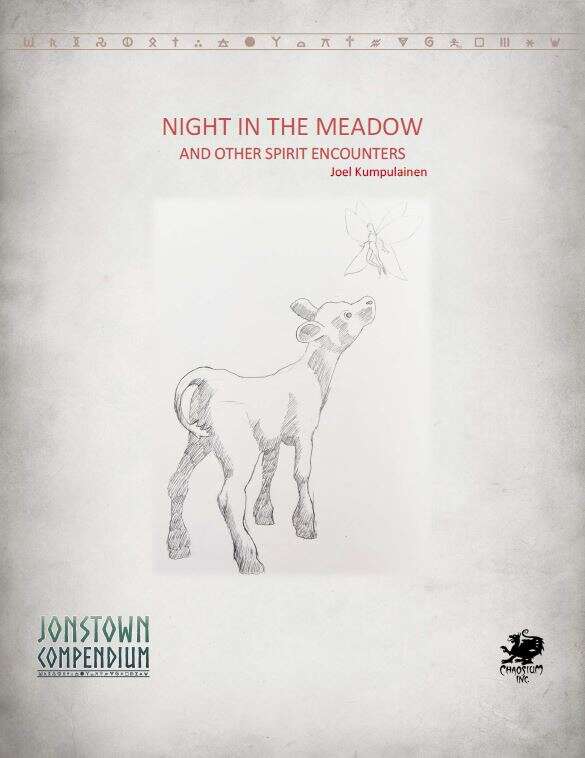
Joel Kumpulainen gives us three encounters for RuneQuest in “Night in the Meadow“, aimed for new gamemasters and adventurers alike. Each mini-adventure starts with a routine task such as cattle herding, and leads to some spirit trouble.
Community Roundup
The community roundup is our highlight of interesting things being mentioned in the Glorantha-related Facebook groups, sub-Reddits, and other similar online places.
The Cradle Aftermath Concludes… Its First Chapter
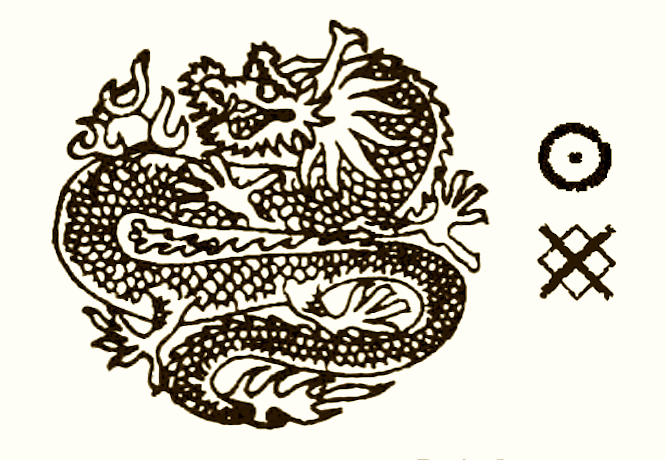
Michael O’Brien finished his epic storyline of what happened in Sun County between 1621 and 1625. Yelo Melo figures out how to get out of Pent Ridge, deals with some really weird stuff, meets a well known Yelmalion figure, and goes on to meet new people.
MOB then concludes:
Here I must suspend this Sun County saga for the time being. It’s been fun, but I’ve been been posting every day since June 9th and after 48 days straight I really need to take a break for a bit! But I’ll return with the second part of the saga – The Time of Two Counts – later this year.
From what I can tell, you can directly connect MOB’s storyline to Jon Webb’s Sandheart series — which isn’t surprising since MOB has been involved in it.
Don’t Underestimate Belintar
Over on the RuneQuest Facebook group, Jeff shared several interesting bits about the Holy Country last week, and he continues this week with some important claims about Belintar’s legacy:
The Tournament recharges the magical energies and possibilities created by Belintar’s exploratory heroquests in his struggle against his Shadow and keeps the Holy Country in a constant state of magical potentiality. This magical creativity enabled such transformations as the human resettlement of Dragon Pass, the Opening of the Oceans, Sartar’s unification, the Yelmalio cult, New Pavis – and that’s just the cast-offs.
That’s… a lot! From what Jeff later tells us, the Holy Country was basically kept in a constant state of divine proximity, something that usually only happens with temples and other sanctified grounds. To achieve this, Belintar was using the energies released by the Tournament of the Masters of Luck and Death, where many contestants walk magical roads and heroquest into Belintar’s and many other gods’ footsteps. Jeff says: “think of it a little like a magical nuclear reactor“. What I’m thinking is mostly “this Belintar guy was played by a frightening minimaxer player who found a way to abuse many of the Rune Magic mechanics of the game!”
Now, last week we touched upon the fact that the Tournament re-creates a new Belintar by having the contestants identify with him during their heroquesting. Among many things, this works to maintain the magical infrastructure of the Holy Country… until someone messes with it. Often, you can attribute “messing things up” to either the Lunars or the Wolf Pirates, but hey, guess what? You can attribute the Tournament’s recent failings to both!
Belintar expired in 1616 because of the magical strain holding things together with the double whammy of invasions by the Western Barbarians and the Wolf Pirate – think of this like the Sea People and Ramses III. Jar-eel had prepared for this and entered the Secret Paths and killed any hapless contestants that came across her at the Gate. Anytime the Tournament is begun, She is now there, a roaming hunter-killer who prevents the game from being complete. The Tournament cannot be completed. Each time it has been attempted, the magical energies were summoned and released, and could not be held in suspension.
This is great. My mind immediately goes to the people who have played in Glorantha long enough that their Adventurers are super powerful. Imagine how awesome it would be to push back against Jar-Eel and unlock the Tournament once again? And to win it and become the new Belintar? Or, even better, to change it in a way that the God King end up more in their image than in Belintar’s?
Note that Jar-Eel couldn’t herself have won the Tournament unless she betrayed who she is and who she is supposed to become. Jeff adds: “In fact, that is something very important to emphasise – Jar-eel is not and cannot become Belintar. She represents a very different path.“
But that’s not all, the unravelling of the Tournament is a big deal:
Some philosophers hold that the Hero Wars is the result of this. That potentiality is being released, but is now outside of the framework of the Tournament. The huge feedback loop has released all that magical energy, powering things like New Gods, strange spirits, the White Bull and the White Bear. Much of it was harnessed by Argrath for his Sartar Magical Union, but it also brought Androgeus to the scene. None of this is a repetition of the past, although there are many who try to impose order on these energies by calling on the past.
So the Tournament is a lot more than the fun little Battle Royale succession test we may have thought originally. As Jeff puts it, “it is one of the Thelemic batteries powering the Third Age”.
What the Board Games Told Us All Along
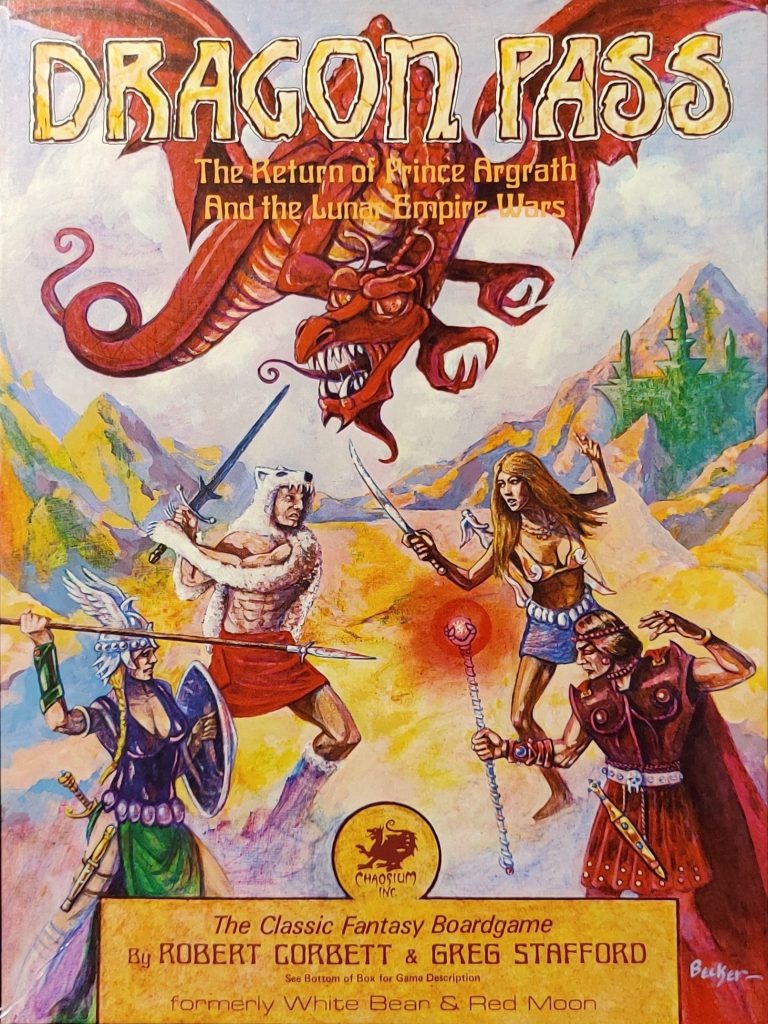
Based upon everything Jeff shared about the Holy Country, Belintar, the Tournament, and so on, he points us back to the Dragon Pass game (the second edition of the earlier White Bear & Red Moon game), specifically page 56:
A vacancy in the throne of the Pharoah to the south drew off many of Sartar’s best swordsmen and seekers, and the Lunar Empire seized the opportunity to invade the kingdom and sack Boldhome. The royal house resisted vigorously and received posthumous Hero recognition for their deeds. Any survivor were hunted across the world by agents and assassins.
There then began a period ranging between Lunar dominance and pre-Sartar anarchy, which was halted only by the arrival of Argrath. The wars that followed are reproduced in the scenarios. The outcome of these glorious battles, and of the History of Dragon Pass, is left to the skill of rulers who dare engage in such legendary wars.
Of course, the “Pharoah” (sic) mentioned here is an early title for Belintar the God King (you may be used to Gloranthan lore changing terminologies from one decade to the next…). I find it interesting that the Lunars messed up the Tournament as a way to distract many powerful Sartarite figures and make it easier to invade… mmh… of course, that might have also drawn powerful energies to the Holy Country, postponing its decline just long enough for King Broyan and his allies to push back against the Lunars? Huh, that’s maybe something to explore a bit more with Joerg’s much better knowledge of that part of the setting.
Orlanth in Sartar
Jeff gives us all kinds of general information about the cult of Orlanth in Sartar. To summarize, Orlanth’s cult is the most developed in Sartar, where this three main aspects (Thunderous, Adventurous, and Rex) have many shrines and temples available. There are however “many other subcults“, so players should feel free to invent obscure aspects of the Thunder God, such as, say, Orlanth Dragonslayer, Orlanth Romantic Singer, or Orlanth Who Smashed His Own Thumb That One Time And Got Mad About It.
We already know, from the RuneQuest core rulebook, that Orlanth Thunderous is the subcult that’s about weather control (it puts the “Storm” in the “Storm Tribe”), that Orlanth Adventurous is the warrior subcult, and that Orlanth Rex is for the rulers of the Kingdom. In excerpts from the upcoming Sartar Homeland boxed set, we learn that Thunderous represents about half of all cult activity in Sartar, while Rex is about a quarter, and Adventurous is about a fifth. I’m not sure how “cult activity” relates to “cult membership”, but this only leaves 5% of “activity” to the other subcults. One subcult that comes to mind is Vinga, where female warriors and adventurers can get together. Another is Barntar, the god patron of farming.
One last thing to note is where each of these subcults operates: Thunderous and Barntar are often found in rural areas, where they are closely linked to local Ernalda worship, while Adventurous, Vinga, and Rex operate at the tribal level and above.
Ernalda in Sartar
And just like the information above on Orlanth, Jeff shares some information on the cult of Ernalda in Sartar, probably as an excerpt from the upcoming Sartar Homeland boxed set.
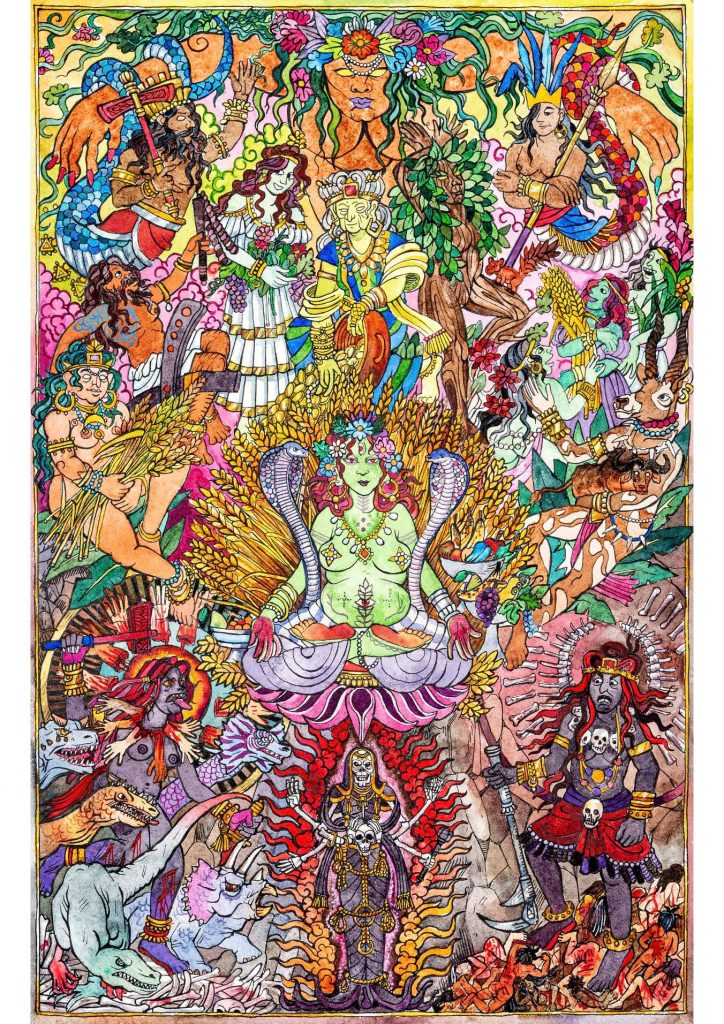
Ernalda is the main Earth cult in Sartar, and benefits from the neighbouring Esrolia and Grazelands where the Earth cults have the most power. In particular, the Feathered Horse Queen has a lot of influence even though she technically doesn’t preside over any Sartarite temple. My understanding is that her heroquesting has important repercussions for any other Earth cult nearby.
Earth temples in Sartar are important because they are home to a whole variety of associated cults’ shrines, from all the Earth pantheon (Babeester Gor, Asrelia, Voria, etc) to all the Husband Protectors (Orlanth, Storm Bull, Yelmalio, etc).
An interesting part to me was this:
In Sartar, the Ernalda cult is the ultimate authority over the land itself, delegating care over specific pieces of land to cults, tribes, or other entities. […] The boundary stones marking the lands delegated to tribes, clans, temples, or other entities or individuals are protected by Babeester Gor.
I knew that the Earth temples allocated plots of land to various households to take care of, but I wasn’t aware until now that it was the Axe Sisters of Babeester Gor that were in charge of protecting these boundaries — I naively thought they simply protected the temples and their interests, but I guess the land itself is indeed under the same umbrella. I can’t wait to witness a neighbours’ dispute about some tree leaning over a boundary being resolved by some blood-thirsty axe-wielding psychopaths…
Of course, if you’re not into petty rural politics and severed limbs, you can take part in marriage contests and get paired with a powerful Earth priestess:
The Ernalda cult is often responsible (or asserts responsibility) for arranging marriages between its members and suitable followers of one of the Husband-Deities, although individual choice is acknowledged and permitted. Temples sometimes arrange marriage contests for women who consent to the rites—these contests are open to any follower of a recognized Husband-Deity and test the suitors to prove their worth through a series of contests. Contestants are typically sponsored by their communities or temples, but “wanderers” are always permitted. The contests match the participants’ prowess at combat, athletics, social skills, and magic. Most contests last a week (and are combined with the High Holy Day ceremonies), but some contests take much longer. The winner of the contest is chosen as the year-husband of the participant, and the participating community gains blessings and magical allies as a result of a successful contest. Many Earth priestesses prefer to choose their consorts in this manner, and the stakes are much higher. The marriage contest of an important Earth priestess is an event of regional importance, and a truce suspends hostilities between followers of the Husband-Deities during the contest.
The Other Lightbringers in Sartar
After Orlanth and Ernalda, Jeff shares what’s up with the other Lightbringer cults in Sartar. This includes the cults of Chalana Arroy, Eurmal, Issaries, and Lhankor Mhy.

These cults are primarily centered on the cities – few tribes, let alone clans, can support the number of specialists needed to maintain a temple to the God of Scribes or the Goddess of Healing, but all of Sartar’s cities have shrines or temples to each of the Lightbringers (although the Eurmal shrine is usually within the Orlanth temple).
I have come to think of these cults as organizations similar to government agencies in the US. So for example, while many counties have the infrastructure for local law enforcement or public transit, it’s only at the state or federal level that there is the budget to maintain park rangers or U.S. Marshalls. As a result, the nearby sheriff might be from around there, but the U.S. Marshall or FBI agent who gets assigned a case near your town could be from anywhere.
This is actually important to understand, according to Jeff:
[…] some of the old material from the HW era made it seem that everything in Orlanthi society was organised on a clan level, and that each clan was a hermetically sealed monad. That’s not true, not even for the Orlanth and Ernalda cults, which have temples that transcend clan and even tribal boundaries. The Sartarites have been organised into tribes for centuries, and have been unified by the Sartar Dynasty for over a century. That is going to have a big impact, allowing a greater surplus to support more specialist cults and occupations, but at a city or even kingdom level.
If you’re wondering who provides the budget to build these federal offices… err… these temples, that’s in big part the Sartar Dynasty. Sartar himself built temples to all these cults in the cities he founded, and his heirs maintained this patronage up to the present.
These cults tend to have a broader perspective than the clan and tribal-based Orlanth and Ernalda cults, and members largely stay neutral in tribal conflicts. During the Lunar Occupation, they were largely untroubled by the Provincial Government and they continued as they had before, albeit with less support and patronage.
And while the Humakt cult doesn’t technically belong to the Lightbringers, he probably operates the same way as them: outside of clan and tribal lines.
Elmal to Yelmalio
We had already seen some clarifications from Jeff on the topic of Elmal and Yelmalio, but this might also be helpful. On the BRP forums, Jeff talks about the transition from one to the other:
Part of the problem here is people are thinking of this as “conversion” or that Elmal and Yelmalio are separate entities. But this is no more conversion than Alakoring displaying his Orlanth Rex magic in the Third Age. This is not a case where Monrogh said, “Hey I have this idea that Elmal is one of the names of Yelmalio, let’s talk about it.” It was more that Monrogh was able to SHOW you the truth of that in the inner worship rites of YOUR cult. “Your eyes were clouded, rinse them, and now look at the True Light. That is Yelmalio.” Monrogh was challenged and tested, and each time he successfully proved his claims, in this world and in the Hero Plane. The cult spirits accepted him, Divinations reinforced him, and no Spirits of Reprisal ever came (indeed, Monrogh became the cult’s spirit of reprisal).
You may also want to check back what Jeff said about “magical challenges”. If I remember correctly, Elmal still exists now as a minor sub-cult of Yelmalio.
Heortland Book Sneak Peek
The Heortland book currently being written by Jeff Richard and Harald Smith is getting a sneak peek in the form of some notes about Durengard, the biggest city east of the Shadow Plateau.

There are several interesting things to me about Durengard. First, this is an important port, and it probably contrasts with the much bigger Nochet on the other side of the Mirrorsea Bay because it’s up river and is dominated by brash Air-dominated dudes instead of Earthly gals. But Durengard was also briefly occupied by the Malkioni so it has a temple to the Invisible God, in addition to the usual Orlanthi worship sites. There’s also a temple to Belintar, where things are bound to get trippy — Jeff himself imagines some Jack Kirby-esque design for that. If you can’t picture what that might look like, behold:
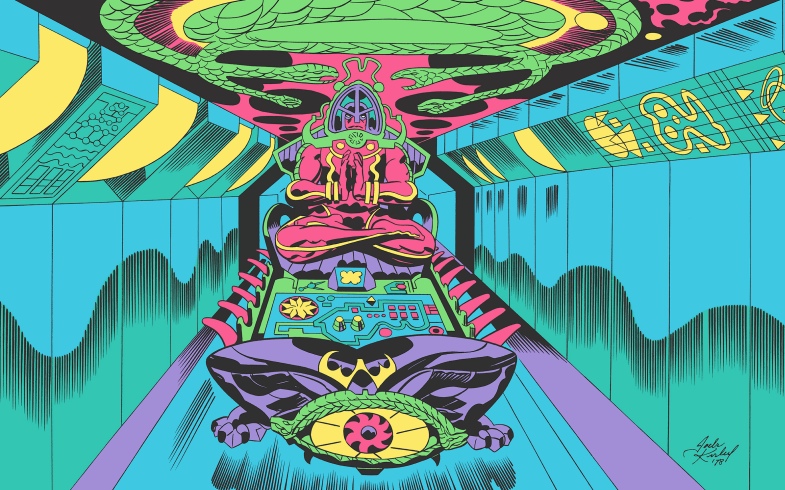
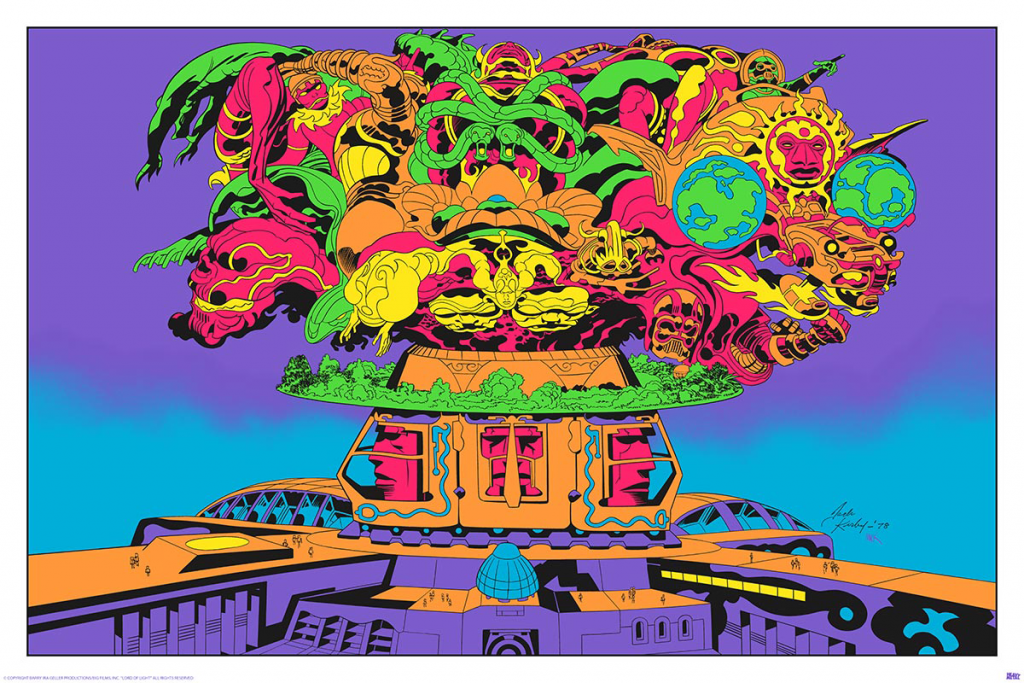
Sandheart Volume 4 Gets a Teaser
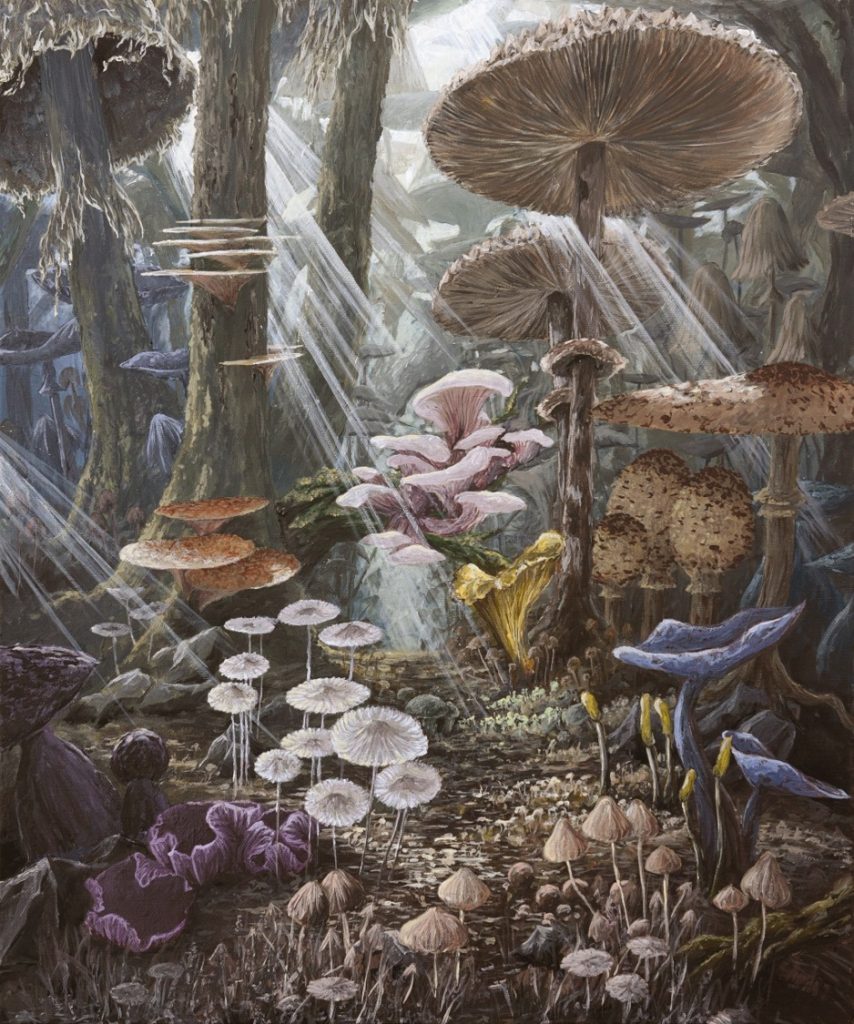
Over on Facebook, Jonathan Webb teases the cover of the next volume in the Sandheart chronicles, painted by Jacob Webb. Where could this be? Given that the previous volumes were focused on Prax, it could either be Biggle Stone or Dagori Inkarth…
3D Printed Llama Rider
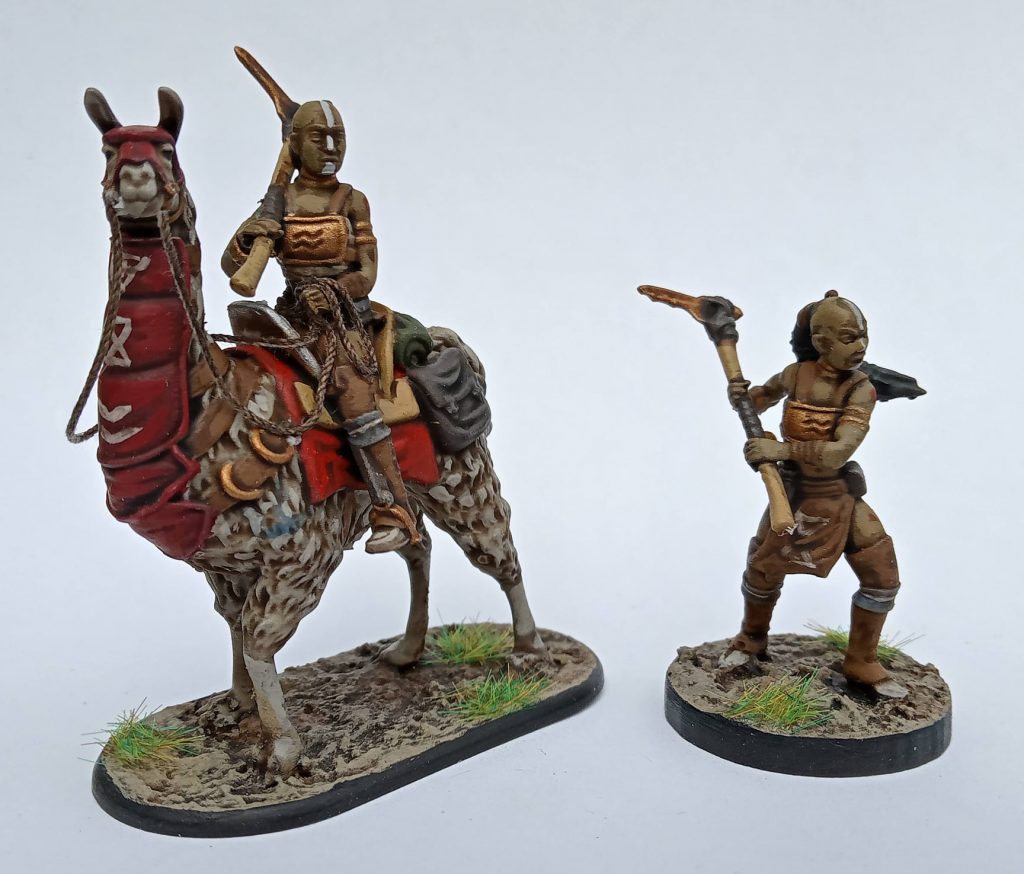
Wayne Peters sculpted this awesome llama rider miniature, and has made the STL files available for anyone with a 3D printer! Good painting skills not included… so your models may not look as good as his!
Elsewhere on Arachne Solara’s Web
Not everything is about Glorantha, although most things are! Here are loosely relevant things that we found on the interwebs.
Exploring Glorantha Series
Iconic Production‘s JM and Evan continue their live show “Exploring Glorantha”, which aims to present Glorantha to people who are not familiar with it. The series is now up to Episode 10, dealing with the pantheons of Air and Moon. We even get a quick shout-out at the end, thanks Evan!
Check out the full playlist of the “Exploring Glorantha” series if you want to start from the beginning. You can support Iconic Production via their Patreon, and as such participate in the live broadcasts of these episodes.
Trade Routes of the Ancient World
The Digital Map of the Ancient World blog has some nice maps (including interactive ones) for all kinds of things related to the Bronze and Iron Ages. Since we just released our podcast episode on travel, how about some maps of trade routes in the 1st century CE?

Give Your Trolls Some Armored Crickets!
We know that trolls love their giant insects, and we also know that the insect world is full of really cool stuff. One of these cool things are “armored crickets”. Look at these cuties, and imagine trollkins jumping around your Adventurers, bashing into them every turn like some kind of chirping blitzkrieg!
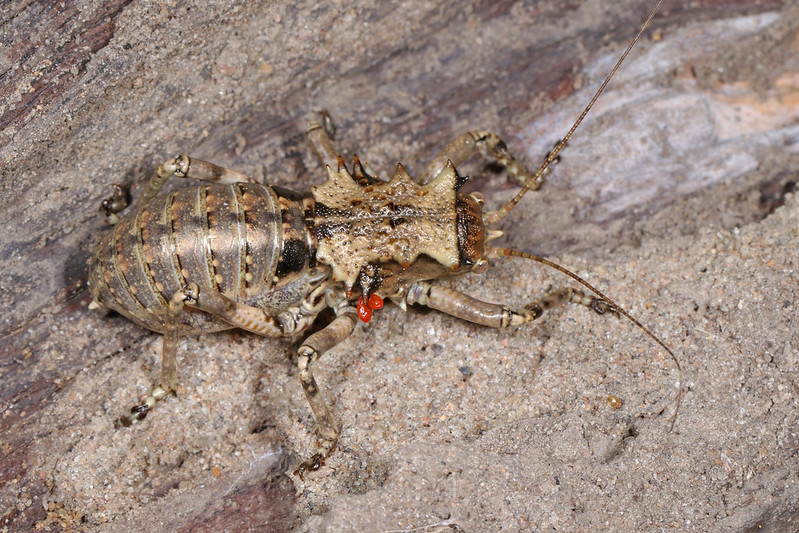
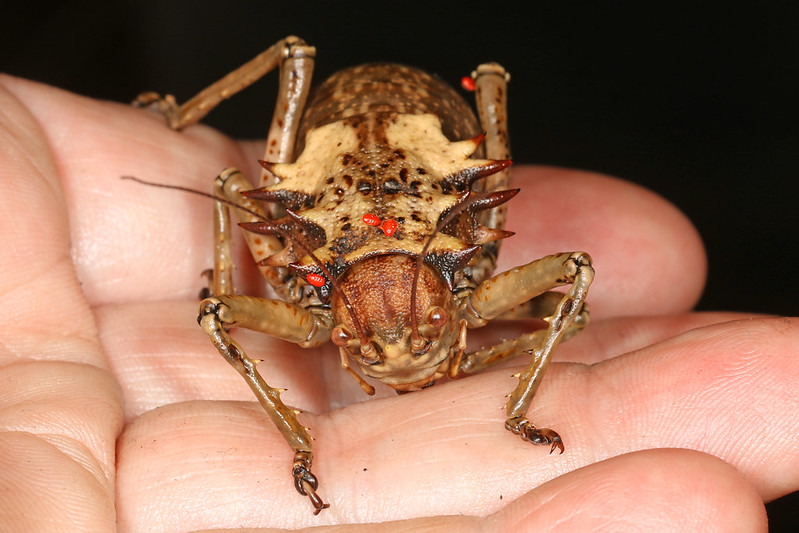
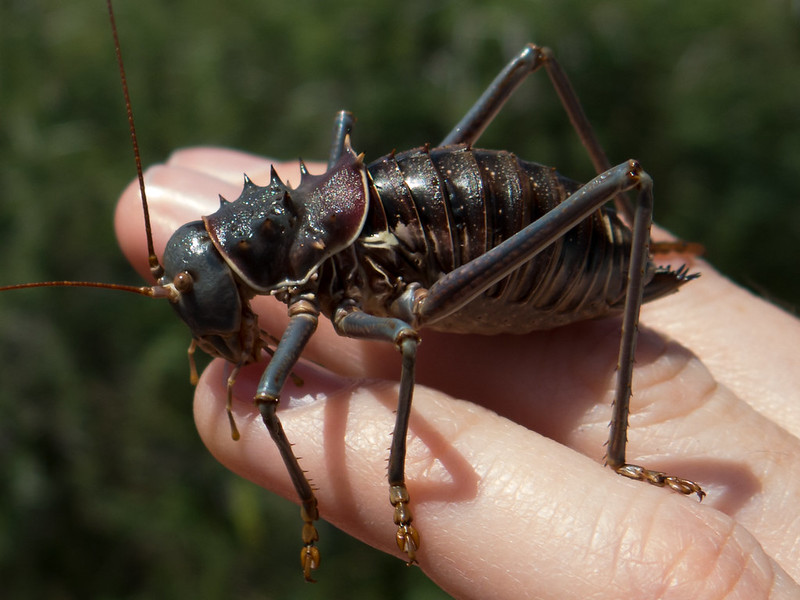
For more information on these critters, check out the Wikipedia page.
Thank you for reading
That’s it for this week! Please contact us with any feedback, question, or news item we’ve missed!



One comment on “Journal of Runic Studies #7”